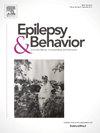预测婴儿癫痫治疗反应的机器学习模型。
IF 2.3
3区 医学
Q2 BEHAVIORAL SCIENCES
引用次数: 0
摘要
癫痫是普遍存在的重大神经系统疾病之一,也是医疗保健领域的一项严峻挑战。最近,机器学习技术已成为各种医疗保健领域的通用工具,包括诊断、治疗评估和预后。我们比较了 11 种机器学习模型,以找到预测队列中药物治疗结果的最佳 ML 模型:在我们的研究中,我们评估了在大学医院儿科神经科就诊的 1-24 个月大癫痫发作并被确诊为癫痫的患者。我们采用了 11 种不同的机器学习技术,即决策树、袋装法、K-最近邻法、线性判别分析、逻辑回归、神经网络、深度神经网络和支持向量机。此外,我们还使用各种性能指标对这些技术进行了比较,以确定抗癫痫药物的反应。我们还利用了奇偶特征选择方法来提高机器学习算法的性能:本研究共纳入 229 名确诊年龄在 1-24 个月之间的患者(男性 110 名,女性 119 名)。研究发现,支持向量机算法在耐药性癫痫检测中效果显著,其曲线下误差值(0.9934)最高,检测准确率达 97.06%:本研究表明,支持向量机算法能有效判定耐药性癫痫,为今后的研究提供了启示。小儿神经科医生和专家应在早期阶段转诊至非药物治疗(癫痫手术、生酮饮食),并提供多学科方法。本文章由计算机程序翻译,如有差异,请以英文原文为准。
Machine learning models for predicting treatment response in infantile epilepsies
Epilepsy stands as one of the prevalent and significant neurological disorders, representing a critical healthcare challenge. Recently, machine learning techniques have emerged as versatile tools across various healthcare domains, encompassing diagnostics, treatment assessment, and prognosis. We compared 11 machine learning model to find the best ML model to predict drug treatment outcomes for our cohort, which we previously evaluated using classical statistical methods.
Methods
In our study, we evaluated patients who presented to the pediatric neurology department of our university hospital with seizures at the age of 1 to 24 months and were diagnosed with epilepsy. We utilized 11 different machine learning techniques namely Decision Tree, Bagging, K-Nearest Neighbour, Linear Discriminant Analysis, Logistic Regression, Neural Networks, Deep Neural Networks, Support Vector Machine. Besides, we compared these techniques using various performance metrics to identify anti-seizure medicine response. We also utilized the chi-square feature selection methods to enhance performance in machine learning algorithms.
Results
Two hundred and twenty-nine patients (110 male and 119 female) who were diagnosed between the ages of 1–24 months were included in the study. Support Vector Machine algorithm was found to be effective in drug resistant epilepsy detection, with the highest aure under curve value (0.9934) and achieving a test accuracy of 97.06 %.
Conclusion
This study can shed light on future studies by showing that the Support Vector Machine algorithm can effectively determine the drug resistant epilepsy. The pediatric neurologist and experts should be referred to non-medical treatment (epilepsy surgery, ketogenic diet) at the early stages and multidisciplinary approach should be provided.
求助全文
通过发布文献求助,成功后即可免费获取论文全文。
去求助
来源期刊

Epilepsy & Behavior
医学-行为科学
CiteScore
5.40
自引率
15.40%
发文量
385
审稿时长
43 days
期刊介绍:
Epilepsy & Behavior is the fastest-growing international journal uniquely devoted to the rapid dissemination of the most current information available on the behavioral aspects of seizures and epilepsy.
Epilepsy & Behavior presents original peer-reviewed articles based on laboratory and clinical research. Topics are drawn from a variety of fields, including clinical neurology, neurosurgery, neuropsychiatry, neuropsychology, neurophysiology, neuropharmacology, and neuroimaging.
From September 2012 Epilepsy & Behavior stopped accepting Case Reports for publication in the journal. From this date authors who submit to Epilepsy & Behavior will be offered a transfer or asked to resubmit their Case Reports to its new sister journal, Epilepsy & Behavior Case Reports.
 求助内容:
求助内容: 应助结果提醒方式:
应助结果提醒方式:


